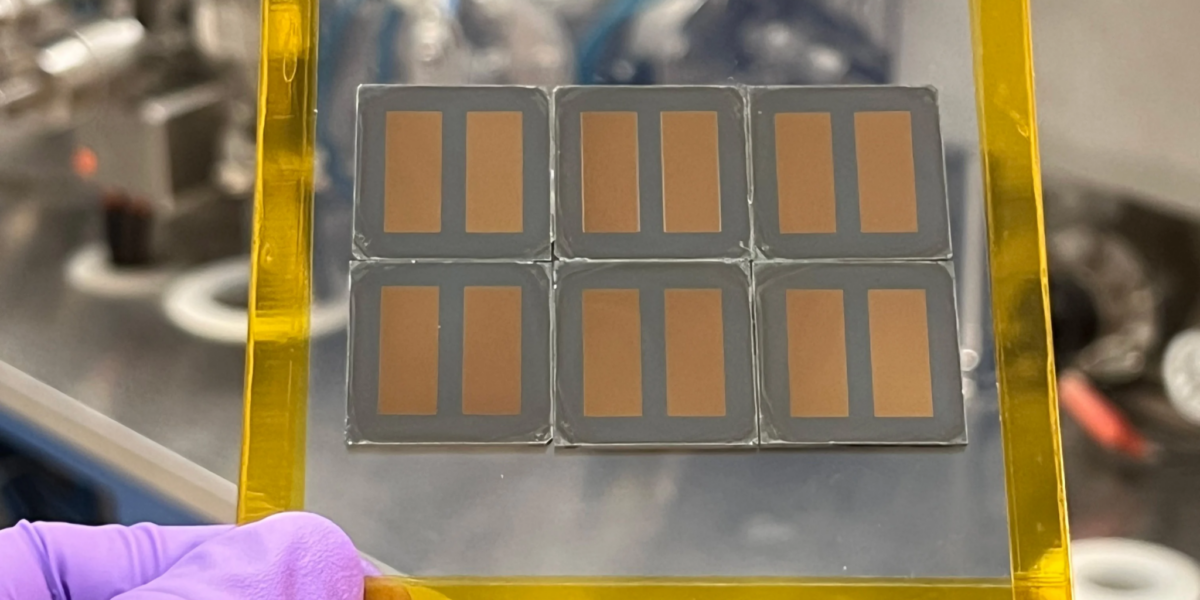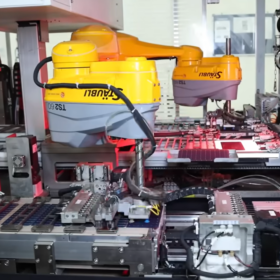A research team at Nanyang Technological University (NTU) in Singapore has developed a selective template growth method that enables the use of certain chemically inert materials in perovskite thin films, overcoming issues with solubility processes and reactivity, to enable more stable yet efficient perovskite solar cells (PSC).
“Our strategy enables access to a class of chemically inert interface materials that previously could not be used due to reactivity and solubility limitations, opening a new avenue for interface engineering in perovskite devices,” said co-corresponding author, Tze Chien Sum in an NTU statement.
The group’s novel selective templating growth (STG) method for chemically inert low-dimensional (CI LD) materials enables interfaces to grow through an organic cation exchange process.
The research is described in “Selective templating growth of chemically inert low-dimensional interfaces for perovskite solar cells,” recently published in Nature Energy. It is the latest result from NTU, which that has been working on stable and efficient perovskite devices.
In the study, the team deposited a layer of phenylammonium lead iodide (PA2PbI4), a representative CI LD interface, onto the perovskite surface. Then a chemically inert bulky cation – 2-piperidin-1-ium-1-ylethylammonium (PiEA2+) was introduced by spin-coating an alcohol-based PiEA2+ solution onto the PA2PbI4 layer, according to an NTU statement.
“Through a controlled organic cation exchange process, in which PA+ is replaced by PiEA2+, a more stable ultrathin layer of (PiEA)PbI4 is formed,” it said.
The prototypes were made with a p-i-n architecture. The active areas of the tested solar cells measured 0.060 cm2 for small-area devices and 1.235 cm2 for large-area devices. The PSC devices had a hole-transporting layer based on MeO-2PACZ or MPA-CPA. The 3D perovskite layer was based on a formamidinium cesium (Cs0.15FA0.85PbI2.8Cl0.2) composition.
The 2D (PiEA)PbI4 interface layer was fabricated on top of the 3D perovskite. The electron-transport layer was based on phenyl-C61-butyric acid methyl ester (PCBM), a bathocuproine (BCP) buffer layer, followed by a silver or gold metal contacts.
The best performing 1-cm2 prototype achieved a power conversion efficiency of 25.1%, which the team claimed is “one of the highest reported for perovskite solar cells of this size.” It retained over 93% of its initial efficiency after 1,000 hours of operation, and 98% after 1,100 hours at 85 °C.
The new approach “offers substantially better protection” for the 3D perovskite against ambient air erosion compared with the traditional 2D PEA2PbI4 interface layer, asserted the team. It further noted that the STG approach described in the research uses spin-coating, but because it is solution-processable, there is potential to scale up with industrial processes, such as blade coating.
The STG strategy has potential beyond cells and devices of the type documented, according to the research. “Our strategy provides a versatile and scalable interface design platform. It can be extended not only to the manufacturing of lead-free perovskite solar cells, but also to other perovskite optoelectronic devices such as light-emitting diodes and photodetectors,” said co-corresponding author Yeng Ming Lam in a statement.
This content is protected by copyright and may not be reused. If you want to cooperate with us and would like to reuse some of our content, please contact: editors@pv-magazine.com.








By submitting this form you agree to pv magazine using your data for the purposes of publishing your comment.
Your personal data will only be disclosed or otherwise transmitted to third parties for the purposes of spam filtering or if this is necessary for technical maintenance of the website. Any other transfer to third parties will not take place unless this is justified on the basis of applicable data protection regulations or if pv magazine is legally obliged to do so.
You may revoke this consent at any time with effect for the future, in which case your personal data will be deleted immediately. Otherwise, your data will be deleted if pv magazine has processed your request or the purpose of data storage is fulfilled.
Further information on data privacy can be found in our Data Protection Policy.